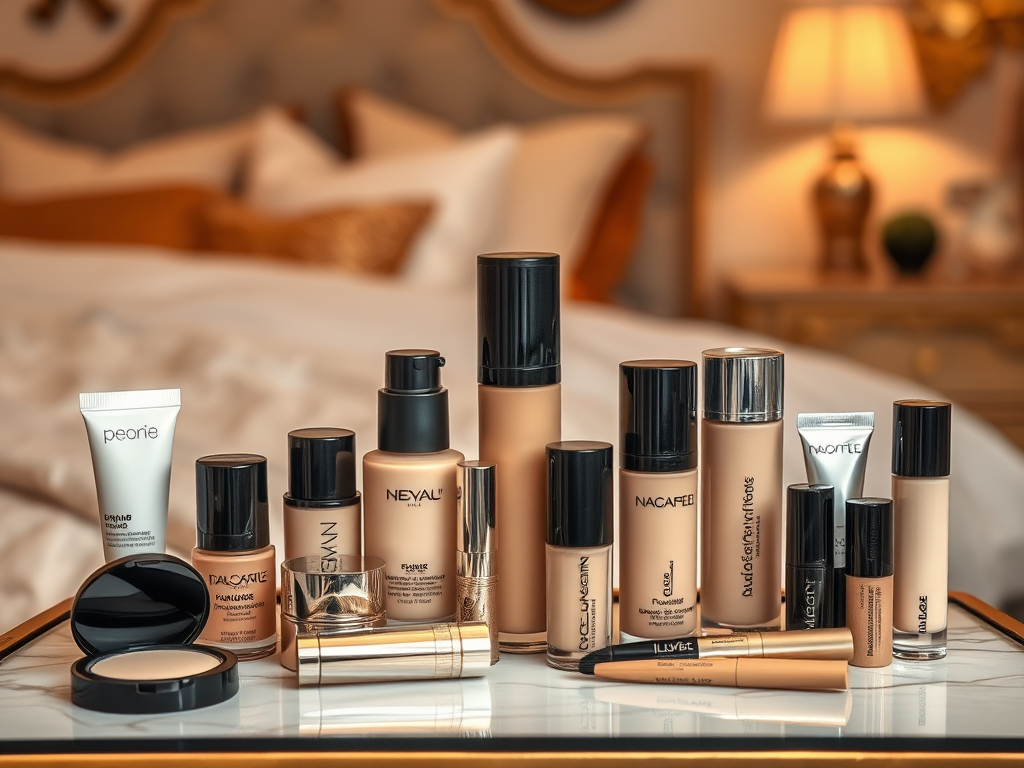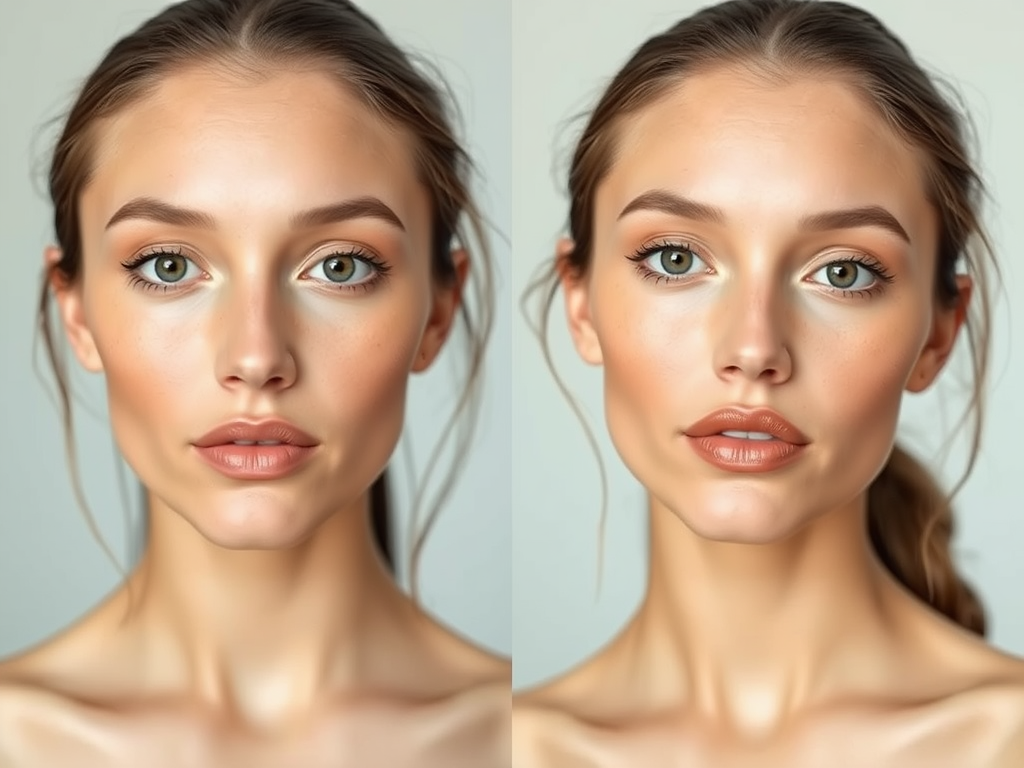Makeup can be an art form, but when it comes to the basics, many people find themselves caught in a web of confusion concerning the order of application. One of the most widely debated topics is whether to apply concealer before or after foundation. This seemingly simple question can lead to different opinions, advice, and an array of techniques. The right order can make a significant difference in achieving a flawless finish and enhancing your natural beauty. It’s crucial to understand not just the purpose of each product, but how their application can impact your overall look. Let’s unravel these common myths and discover the best practices for a stunning complexion.
Understanding Concealer and Foundation

In the world of makeup, concealer and foundation serve distinct purposes. Understanding these differences is crucial for achieving the perfect look. At its core, foundation is designed to create an even skin tone and serve as a base for your makeup application. On the other hand, concealer is specifically formulated to cover blemishes, dark circles, and other imperfections that may need extra attention. When recognizing these different roles, it becomes easier to determine the order of application. Let’s delve a bit deeper into the characteristics and uses of these makeup staples.
The Role of Foundation
Foundation acts as the canvas for your makeup masterpiece. Its primary goal is to provide an even skin tone, creating a uniform base from which to work. The variety of formulations available—liquid, cream, powder, and stick—allows for customization based on skin type and personal preference. Furthermore, foundations come in numerous shades to match diverse skin tones perfectly. When applied properly, foundation can smooth out the appearance of your skin, making it look polished and fresh. Its buildable nature means you can adjust coverage based on the occasion, whether it’s a day at the office or a night out.
The Purpose of Concealer
Concealer acts like your personal invisible shield, helping to disguise specific blemishes or skin issues without altering the overall look. Unlike foundation, which covers a wider area, concealer is applied strategically to problem areas. This intricate approach allows for targeted correction, creating the illusion of flawless skin where it counts the most. Concealers are often thicker in texture, with high pigmentation designed to cover dark circles or redness effectively. Remember, while foundation lays the groundwork, concealer ensures that your trouble spots don’t steal the spotlight. Knowing how and when to apply concealer can take your makeup game to the next level.
Common Myths about Concealer and Foundation Order

There are several misconceptions surrounding whether to apply concealer before or after foundation. Let’s dive into some of these myths. Firstly, the notion that concealer should always be applied first stems from a desire for maximum coverage. Many beauty enthusiasts believe this technique will yield the best results. However, there are times when applying concealer first can lead to a cakey appearance. Conversely, there’s also a prevailing opinion that the order doesn’t matter, but this is misleading. The sequence can significantly affect the final look!
Myth 1: Concealer Should Always Be First
Applying concealer first may seem like a good idea for those focused on coverage. However, while it can work in certain situations, it often results in excess product on the skin. The risk here is compromising the seamless blend and risking a heavy look. If foundation covers the majority of imperfections, applying concealer afterward can ensure a more natural appearance without excess buildup. Therefore, the task of concealing becomes more of a fine-tuning process, lending to precision and elegance. This approach not only saves product but enhances the overall look with fewer chances of looking overdone.
Myth 2: Order Doesn’t Matter
While some argue that the order isn’t significant, anyone who has applied makeup knows that technique makes all the difference. The point of makeup application is to enhance rather than mask. Consequently, understanding the ideal application order can be key to achieving that sought-after flawless look. As a general rule, starting with foundation provides a smooth and even canvas for concealer to work its magic without looking excessive. In essence, the order in which these products are applied can dictate your makeup’s longevity, blending, and overall aesthetics.
The Ideal Application Order
While personal preference plays a role, there are general guidelines to follow for the best results. Applying foundation first is widely regarded as the most effective method. This technique allows for a smoother, more blended result overall. When you apply foundation first, it helps minimize the appearance of blemishes and redness that may need some extra attention. After your foundation is set, it’s time to bring out the concealer to target those specific areas. This dual-layer approach creates a flawless finish without risking excess product build-up.
| Foundation Type | Best For | Finish |
|---|---|---|
| Liquid Foundation | All skin types, especially dry | Natural or Dewy |
| Cream Foundation | Normal to dry skin | Matte |
| Powder Foundation | Oily skin | Matte |
| Stick Foundation | All skin types | Buildable Coverage |
After determining your foundation, choose a concealer that complements your needs. The key is for your concealer to be slightly lighter than your foundation to create a natural highlighting effect. Following this guideline ensures that your skin looks fresh and radiant, with brightened areas that draw attention to your best features.
Tips for Perfect Application
Achieving flawless makeup application involves a few key techniques that enhance both products. First and foremost, blending techniques play a significant role in your makeup’s final appearance. Whether you choose to use brushes, sponges, or your fingertips, each method has its own advantages. For instance, sponges can create a soft finish whereas brushes can help achieve greater precision. Blending well is crucial to avoid harsh lines that can disrupt the seamless finish you’re aiming for.
It’s essential to select the right shades and formulas of both foundation and concealer for a natural look. Opt for products from reputable brands that cater to your specific skin type. Consider the following factors while choosing your makeup:
- Skin Type: Oily, dry, combination, or sensitive.
- Desired Finish: Matte, dewy, satin, or natural.
- Coverage Level: Full, medium, or light coverage.
Every individual’s skin is unique, which is why testing different products can make all the difference in your final makeup look.
Conclusion
In conclusion, the order of applying concealer and foundation can greatly influence your makeup’s final appearance. While preferences may vary, the generally accepted method of applying foundation first typically yields a more polished look. By embracing these guidelines and debunking common myths, you can enhance your makeup routine and portray a flawless visage. This mastery of makeup application not only highlights your beauty but boosts your confidence, allowing you to face the world with grace. Understanding the unique roles of foundation and concealer empowers you to create stunning looks that are truly your own.
Frequently Asked Questions
- Should I ever apply concealer before foundation? Yes, some makeup artists recommend applying concealer first for specific skin types or looks, but this is generally less common.
- What if I have an oily skin type? If you have oily skin, consider setting your foundation with powder before applying concealer to prevent excess shine.
- Can I use a cream concealer with liquid foundation? Absolutely! Just ensure to blend well to avoid a patchy appearance.
- Is it necessary to use both concealer and foundation? Not necessarily. Depending on your skin’s condition, you may choose to use only one or the other.
- How do I avoid a cakey look? One way to prevent a cakey appearance is to apply thin layers of both products and blend well. Additionally, using the right brush or sponge can make a significant difference.


